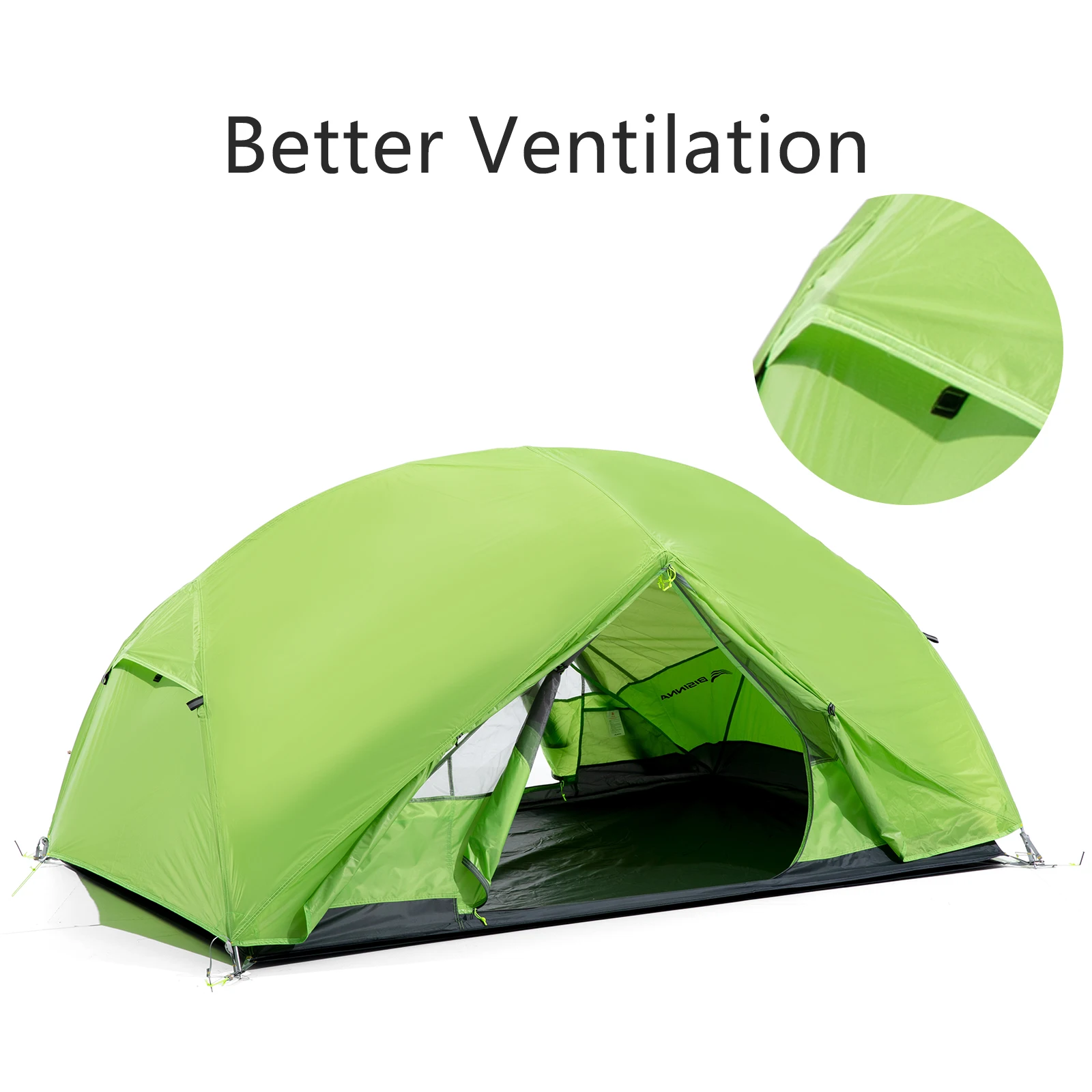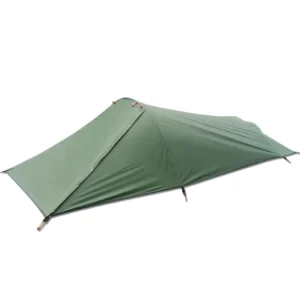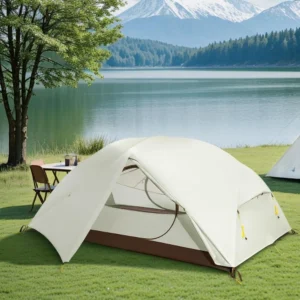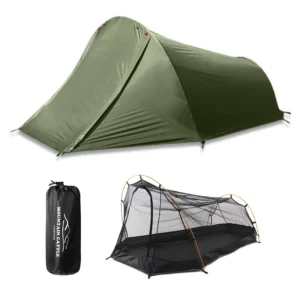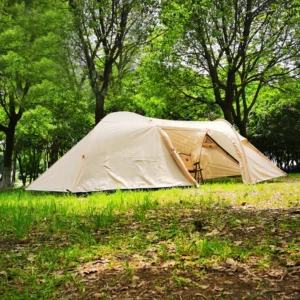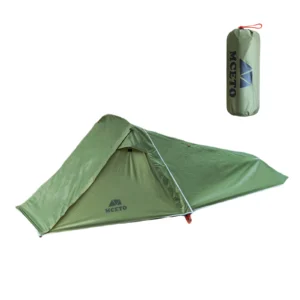When choosing the perfect 2-person tent, finding the right balance of weight, durability, weather protection, and comfort is essential for your outdoor adventures. Whether you’re backpacking through remote wilderness or enjoying a weekend at a developed campground, your tent serves as your home away from home. This comprehensive guide evaluates the top 2-person tents available today, comparing key features like livability, packed size, weather resistance, and value to help you find the ideal shelter for your specific needs. Our recommendations are based on extensive analysis, product testing where possible, and feedback from experienced outdoor enthusiasts.
Understanding the nuances of dome tent designs for couples can make a significant difference in your camping experience, allowing you to select the right shelter for your adventures.
Our Top 5 Best 2-Person Tents
Before diving into detailed reviews, here’s a quick overview of our top recommendations:
- Best Overall 2-Person Tent: Big Agnes Copper Spur HV UL2 – Exceptional balance of weight, space, and durability for versatile outdoor adventures.
- Best Value 2-Person Tent: REI Co-op Half Dome SL 2+ – Outstanding features and reliable performance at a mid-range price point.
- Best Ultralight 2-Person Tent: Nemo Hornet Elite – Premium ultralight design with impressive livability for dedicated backpackers.
- Best Weather-Resistant 2-Person Tent: MSR Hubba Hubba NX – Superior protection against rain, wind, and challenging conditions.
- Best Budget 2-Person Tent: Marmot Tungsten 2P – Excellent quality, surprising features, and durability at an affordable price.
The benefits specific to two-person dome tent designs include improved stability, efficient space utilization, and better weather resistance compared to other tent styles.
Understanding Tent Specifications and Features
Key Tent Specifications Explained
Before reviewing our top picks, let’s clarify the specifications that matter most when choosing a 2-person tent:
- Trail Weight vs. Packed Weight: Trail weight includes only the essential components (poles, body, and rainfly), while packed weight includes everything (stakes, guy lines, stuff sacks).
- Floor Dimensions and Area: Measured in square feet/meters, revealing the actual usable space.
- Peak Height: Determines how easily you can sit up or move around inside.
- Doors and Vestibules: More doors mean easier entry/exit; vestibules provide protected gear storage outside the sleeping area.
- Seasonality Rating: 3-season tents work for spring, summer, and fall; 4-season tents handle winter conditions.
- Packed Size: Critical for backpacking, indicates how much space the tent occupies in your pack.
When planning your next adventure, exploring our selection of backpacking tents designed for two people can help you find the perfect balance of weight and comfort.
Tent Design Features Worth Considering
Modern 2-person tents incorporate various design elements that enhance performance:
- Freestanding vs. Non-Freestanding: Freestanding tents can be pitched without stakes on any surface; non-freestanding designs save weight but require proper staking.
- Double-Wall vs. Single-Wall: Double-wall tents have separate inner tent and rainfly for better ventilation; single-wall designs save weight but often have more condensation issues.
- Pole Structure: Affects stability, headroom, and ease of setup. Hub-style pole configurations often maximize interior space.
- Materials and Denier Ratings: Higher denier numbers indicate thicker, more durable (but heavier) materials.
Understanding how dome tent architecture works can help you appreciate why this design has become so popular for outdoor enthusiasts seeking reliable shelter.
Detailed Reviews of Our Top 5 2-Person Tents
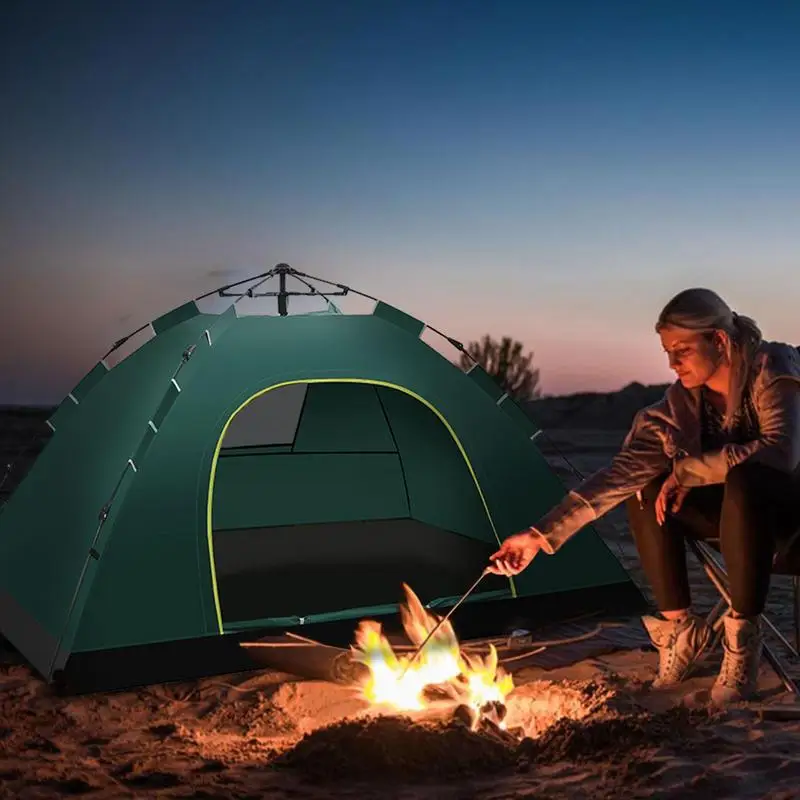
Big Agnes Copper Spur HV UL2: Best Overall 2-Person Tent
Key Specifications:
– Packed Weight: 3 lbs 2 oz (1.42 kg)
– Floor Area: 29 sq ft (2.7 sq m)
– Peak Height: 40 inches (102 cm)
– Doors/Vestibules: 2/2
– Materials: Ripstop nylon with silicone treatment
– Packed Size: 6 x 19.5 inches (15 x 50 cm)
The Big Agnes Copper Spur HV UL2 has earned its reputation as the gold standard for backpacking tents, striking a remarkable balance between lightweight design and livability. Its steep-walled construction creates a notably spacious interior while maintaining an impressively low weight. Two large doors and vestibules provide convenient access and ample gear storage, eliminating the need to climb over your partner.
The high-volume hub pole system maximizes interior space and simplifies setup with color-coded components. While the ultralight materials require reasonable care, they offer surprising durability when handled properly. Weather resistance is excellent, with minimal sag when wet and strong wind performance for a 3-season tent. The main drawback is the premium price, but for frequent backpackers who prioritize comfort without excessive weight, the Copper Spur delivers exceptional long-term value.
For those focused on minimizing pack weight, our selection of ultralight options for weight-conscious backpackers offers excellent alternatives that maintain comfort while reducing bulk.
REI Co-op Half Dome SL 2+: Best Value 2-Person Tent
Key Specifications:
– Packed Weight: 4 lbs 2 oz (1.87 kg)
– Floor Area: 33.75 sq ft (3.1 sq m)
– Peak Height: 42 inches (107 cm)
– Doors/Vestibules: 2/2
– Materials: Ripstop nylon/polyester blend
– Packed Size: 7 x 20.5 inches (18 x 52 cm)
The REI Co-op Half Dome SL 2+ offers outstanding value with its generous dimensions and quality construction. The “plus” sizing means extra floor space compared to standard 2-person tents, providing welcome comfort for two people and gear. The vertical sidewalls create impressive livability, while the durable materials withstand regular use without excessive weight.
Setup is straightforward with a color-coded 3-pole design that creates stable architecture. The rainfly provides full coverage with adjustable ventilation options, and the generous vestibules accommodate backpacks and boots with room to spare. While slightly heavier than ultralight options, the Half Dome’s thoughtful features, sturdy construction, and attractive price point make it an excellent choice for backpackers who venture out several times per year and want one reliable tent for various conditions.
For hikers seeking a middle ground between weight and comfort, our collection of lightweight tents balancing comfort and portability provides excellent options for various adventure styles.
Nemo Hornet Elite: Best Ultralight 2-Person Tent
Key Specifications:
– Packed Weight: 2 lbs 1 oz (0.94 kg)
– Floor Area: 27.3 sq ft (2.5 sq m)
– Peak Height: 37 inches (94 cm)
– Doors/Vestibules: 2/2
– Materials: Ultra-lightweight ripstop nylon
– Packed Size: 5 x 16 inches (12.7 x 40.6 cm)
The Nemo Hornet Elite represents the pinnacle of ultralight design without sacrificing essential features. At just over 2 pounds, it’s remarkably light yet still offers two doors and vestibules – a luxury in the ultralight category. The innovative pole structure creates vertical volume where it matters most while minimizing material and weight.
The tent features premium 7D nylon fabric and optimized pole design to achieve its featherlight weight. Despite its minimalist approach, the Hornet Elite handles moderate weather conditions well and provides adequate space for two average-sized hikers. However, the tight quarters and delicate materials make this tent best suited for experienced backpackers who prioritize traveling fast and light over spacious accommodations. The premium price reflects its specialized ultralight engineering and high-quality materials.
If portability is your primary concern, discovering top options for hikers seeking lightweight portable shelters can help you find the perfect balance between weight and protection.
MSR Hubba Hubba NX: Best Weather-Resistant 2-Person Tent
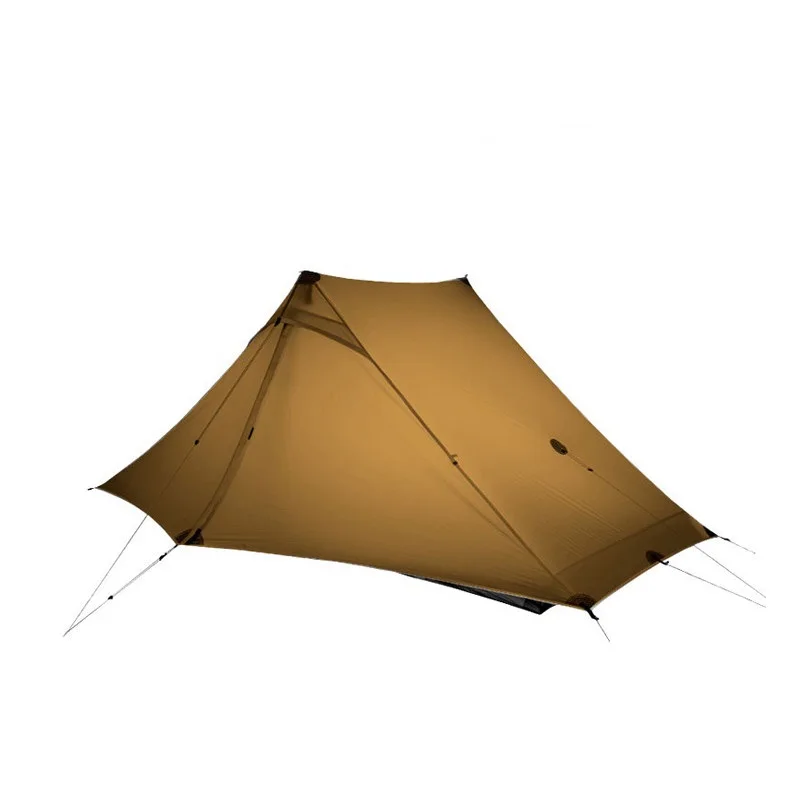
Key Specifications:
– Packed Weight: 3 lbs 14 oz (1.76 kg)
– Floor Area: 29 sq ft (2.7 sq m)
– Peak Height: 40 inches (102 cm)
– Doors/Vestibules: 2/2
– Materials: Ripstop nylon with Xtreme Shield coating
– Packed Size: 6 x 18 inches (15.2 x 45.7 cm)
The MSR Hubba Hubba NX has long been trusted by adventurers facing challenging weather conditions. Its symmetrical design creates excellent interior space with consistent headroom throughout. The proprietary Xtreme Shield waterproofing system provides superior, longer-lasting weather protection with minimal seam taping and reduced weight.
The freestanding design features a unified hub-and-pole system that makes setup intuitive even in poor conditions. Large vestibules protect gear while allowing good airflow, and strategic venting minimizes condensation. The slightly higher weight compared to ultralight options is justified by the tent’s exceptional durability and storm-worthiness. For those who camp in unpredictable weather or remote areas where shelter reliability is paramount, the Hubba Hubba NX offers peace of mind with reasonable weight.
When facing uncertain conditions, exploring our selection of weather-resistant backpacking tent options can help ensure you stay dry and comfortable in challenging environments.
How to Choose the Right 2-Person Tent for Your Needs
Matching Tent Type to Your Activities
Different outdoor activities demand different tent characteristics:
For Backpacking:
– Prioritize low weight (under 4 pounds/1.8 kg for comfortable carrying)
– Consider packed size to fit efficiently in your backpack
– Balance weight savings with durability based on terrain
– Two doors become increasingly valuable on longer trips
For Car Camping:
– Weight matters less; focus on comfort and durability
– Look for taller peak heights (40+ inches/102+ cm) and roomier floor plans
– Consider ease of setup and takedown
– More robust materials improve long-term durability
For Mixed Use:
– Choose a mid-weight option (3-4 pounds/1.4-1.8 kg) that won’t feel too heavy on occasional backpacking trips
– Ensure adequate space for comfortable car camping
– Look for versatile weather protection suitable for your typical conditions
– Consider models with modular setups (fast-pitch options, removable elements)
Lightweight Backpacking Tent, Ultralight Backpacking Tent, Ultralight Bivy Tent
Ultralight Single Person Camping Tent with Aluminum Poles for 3-Season Backpacking Waterproof DesignPrice range: $94.88 through $326.82 Select options This product has multiple variants. The options may be chosen on the product pageLightweight Backpacking Tent, Ultralight Backpacking Tent, Waterproof Backpacking Tent
$391.05 Select options This product has multiple variants. The options may be chosen on the product pageCompact Backpacking Tent, Lightweight Backpacking Tent, Waterproof Camping Tent
$335.52 Select options This product has multiple variants. The options may be chosen on the product pageUltralight Backpacking Tent, Ultralight Dome Tent, Winter Camping Tent
Price range: $369.63 through $370.07 Select options This product has multiple variants. The options may be chosen on the product pageCamping Tent with Vestibule, Waterproof Camping Tent
Price range: $407.89 through $479.48 Select options This product has multiple variants. The options may be chosen on the product pageBackpacking Tent with Vestibule, Freestanding Backpacking Tent, Lightweight Backpacking Tent
Price range: $446.89 through $447.22 Select options This product has multiple variants. The options may be chosen on the product page
Many campers wonder if a 2-person tent is actually big enough for comfortable use, which depends greatly on your size, gear requirements, and comfort preferences.
Understanding Weather Protection Needs
Tents are designed to handle specific weather conditions:
3-Season Tents:
– Suitable for spring, summer, and fall conditions
– Handle rain, light snow, and moderate winds
– Feature mesh panels for ventilation and insect protection
– Look for full-coverage rainflies and quality seam sealing
Extended Season (3+) Tents:
– Offer more robust protection for shoulder seasons
– Include less mesh and stronger poles than standard 3-season models
– Provide better snow and wind resistance
– Still prioritize ventilation for warmer conditions
Weather-Specific Considerations:
– For rainy regions: Prioritize waterproof ratings, vestibule space, and proper ventilation
– For windy areas: Look for low-profile designs with multiple pole crossing points
– For hot climates: Maximize mesh and ventilation options
– For mixed conditions: Choose adaptable designs with adjustable ventilation
Understanding tent weather protection features is critical for selecting a shelter that will perform well in your expected conditions.
Optimizing Your Tent Experience
Essential Tent Accessories and Add-Ons
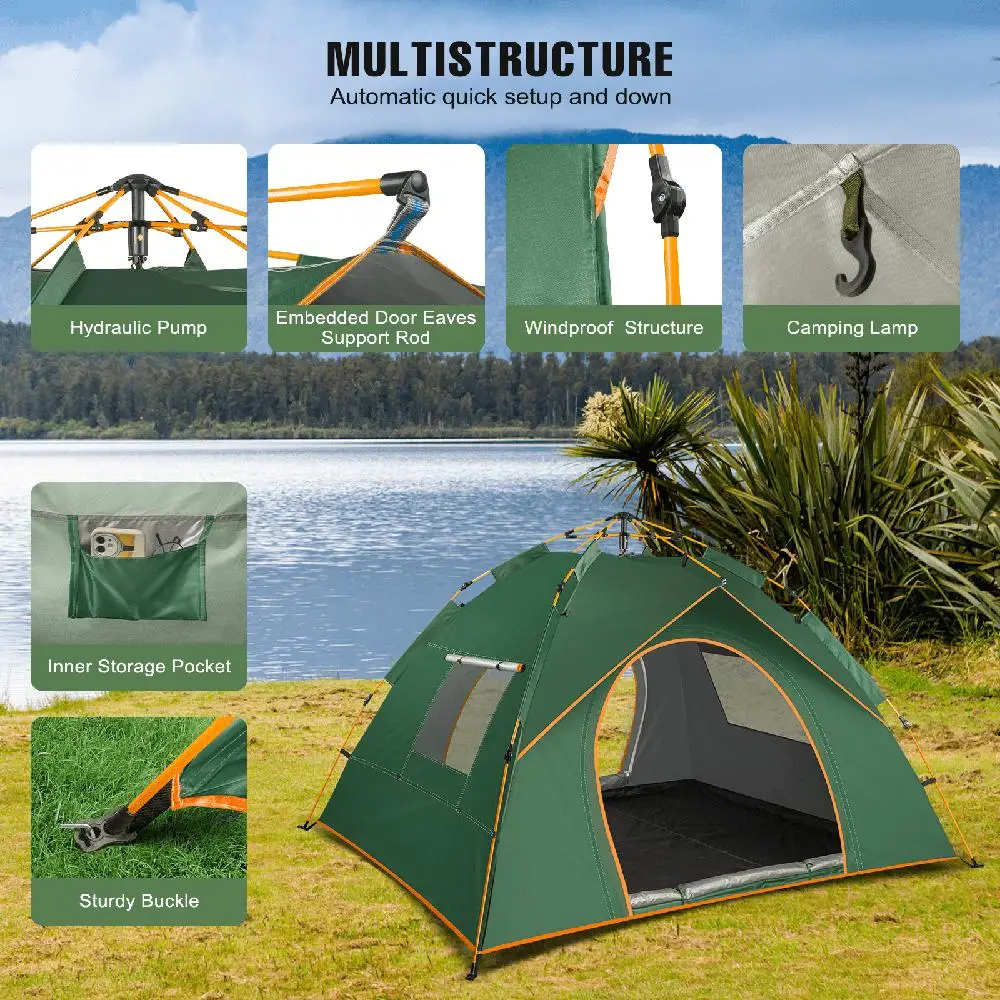
The right accessories enhance your tent’s performance and longevity:
Footprints:
– Purpose-designed groundsheets that protect your tent floor
– Enable “fast-pitch” setups with some tent models
– Usually lighter and more precisely sized than generic tarps
– Consider if your camping locations have rough ground or frequent moisture
Quality Stakes:
– Upgrade from included stakes for better holding power
– Aluminum Y-stakes offer good all-around performance
– Consider specialized stakes for challenging conditions (sand, snow, rocky ground)
– Always bring a few extras for emergency repairs or challenging pitching locations
Guy Lines:
– Properly tensioning guy lines dramatically improves stability in wind
– Reflective cord increases visibility to prevent tripping at night
– Consider aftermarket reflective/tensionable lines for easier adjustments
Repair Kit:
– Carry pole repair sleeves, seam sealer, and tent-appropriate patches
– Small multi-tool for gear adjustments and emergency repairs
– Lightweight options are available specifically for backpacking
For extended trips or more comfortable camping, tents with vestibules for enhanced gear storage provide valuable protected space outside the main sleeping area.
Tent Care and Maintenance Tips
Proper care extends your tent’s lifespan and maintains its performance:
During Setup and Use:
– Clear your tent site of sharp objects that could damage the floor
– Avoid continuous exposure to direct sunlight when possible
– Don’t pull stakes directly from loops; loosen soil first to prevent tears
– Keep food outside to avoid attracting wildlife and potential damage
After Your Trip:
– Never store a tent wet or damp; completely dry before packing away
– Clean with mild, non-detergent soap and water as needed
– Store loosely in a cool, dry place, not compressed in a stuff sack
– Periodically inspect seams and reapply seam sealer when necessary
– Hand clean zippers with water and lubricate occasionally with zipper-specific products
Understanding ultralight tent technologies and designs can help you appreciate the engineering that goes into creating shelters that balance minimal weight with adequate protection.
Frequently Asked Questions About 2-Person Tents
Is a 2-person tent actually comfortable for two people?
Standard 2-person tents accommodate two sleeping pads side-by-side but provide minimal additional space. For more comfort with two people, consider “plus” sized models or 2.5-person tents that offer extra width and length without the full weight penalty of a 3-person tent.
What’s the difference between freestanding and non-freestanding tents?
Freestanding tents maintain their structure through poles alone and can be set up anywhere, even on solid rock or platforms. Non-freestanding tents require stakes for structure, saving weight but requiring suitable ground for staking.
Are lightweight tents less durable?
Generally, yes – ultralight tents use thinner materials that require more careful handling. However, modern fabrics offer impressive strength-to-weight ratios, and many lightweight tents provide surprisingly good durability when properly cared for.
How much should I spend on a 2-person tent?
Quality 2-person tents range from $150 to $600+. For occasional use in good weather, $150-250 is adequate. For regular backpacking or challenging conditions, investing $300+ in a higher-quality tent often provides better value over time through increased durability and performance.
Making Your Final Decision
When selecting the perfect 2-person tent, consider these factors in order of priority:
- Intended Use: Backpacking demands weight efficiency; car camping prioritizes space and features.
- Weather Conditions: Match the tent’s weather resistance to your typical adventures.
- Frequency of Use: More frequent use justifies higher investment in durability and features.
- Personal Space Preferences: Be honest about your comfort needs – a cramped tent can ruin an otherwise great trip.
- Budget Reality: Balance immediate cost against long-term value and performance.
Remember that the “best” tent is ultimately the one that meets your specific needs. Consider renting different styles before committing to a purchase, and whenever possible, set up a tent in person to evaluate livability and ease of setup. With the right 2-person tent, you’ll have a reliable shelter that enhances your outdoor experiences for years to come.
At Explore Elements, we understand that selecting the perfect tent is a personal decision that depends on your unique outdoor activities. That’s why we carefully curate our selection to include only the highest quality options that have proven themselves in real-world conditions.

